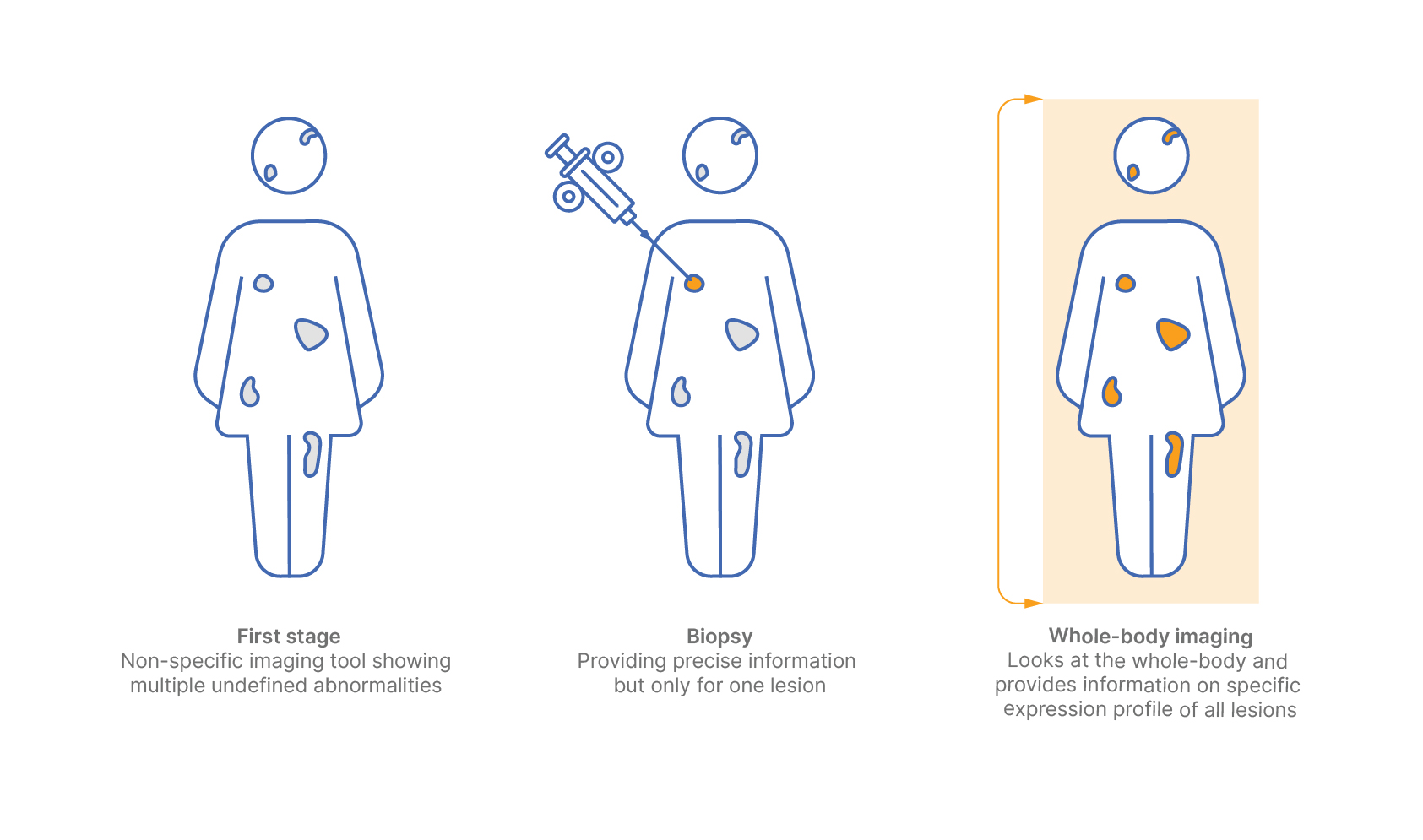OUR TECHNOLOGY
Redefining diagnostics through innovative sdAb tracers
ABSCINT develops in vivo imaging diagnostics, including radiopharmaceutical diagnostics, also called positron emission tomography (PET) tracers.

ABSCINT’s technology advantages
In vivo diagnostics
Enables whole-body imaging
High specificity
Enables disease characterization
Fast results
Imaging 60-90 minutes post injection
Quick clearance
No need for patient hospitalization
Precision in every scan: how our technology enhances pet tracers in medical imaging
PET tracers combine a radioactive tag bound to a targeting agent. As the designated targeting agent, ABSCINT capitalizes on the unique properties of single-domain antibodies (sdAbs).
These sdAbs constitute the foundation of ABSCINT’s technology and are perfectly suited for novel PET tracers. sdAbs are small antibody scaffolds, which bind to specific targets according to the lock-and-key model. Targets are surface proteins present on aberrant cells or cells of interest.
sdAbs are labeled with a short-half life radioisotope, for example – but not limited to – gallium-68; and are then intravenously administered to the patient.
Once injected, the radiolabeled sdAb searches and specifically binds to its target, rendering its location visible via PET imaging. In other words, the sdAb is the ‘whistleblower’ revealing the presence of aberrant cells carrying a specific target.
The advantages of sdAbs
sdAbs are antibody fragments that bind selectively to a specific target. With a molecular weight of 12-15 kDa, they are much smaller than conventional antibodies (Abs).
Initially engineered from heavy-chain antibodies found in camelids, sdAbs match the specificity of conventional antibodies while providing numerous benefits: they are highly stable chemically, easy to produce, and exhibit a favorable biodistribution profile for in vivo imaging.
The advantages of whole-body imaging
Whole-body imaging provides a comprehensive view of all lesions or anomalies present in a patient. While biopsies are the current standard of care for deriving detailed information from one or a few lesions, they fall short in offering insights into additional lesions located elsewhere in the body.
Given the dynamic nature of cancers, characterized by their heterogeneous and potential to evolve and metastasize, relying solely on a biopsy may not provide an accurate representation of the entire tumor load or metastases across diverse organs.
By utilizing specific tracers, whole-body imaging delivers a holistic view on all lesions expressing the target of interest, offering a more complete picture of the patient’s condition.


